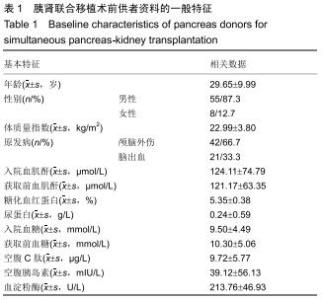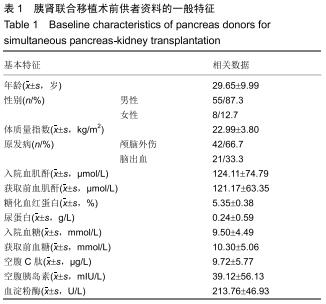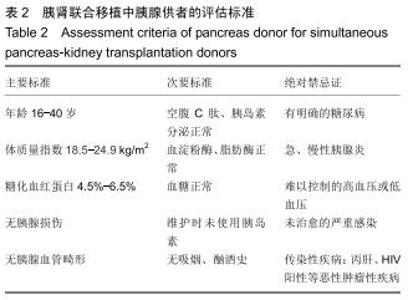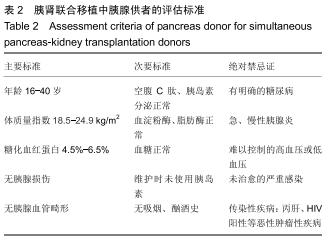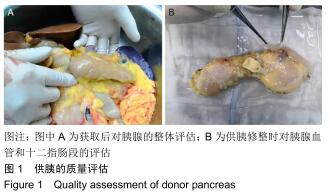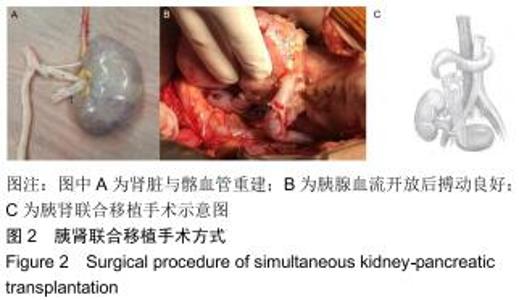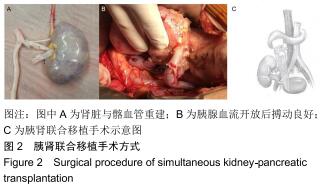|
[1] KELLY WD, LILLEHEI RC, MERKEL FK, et al. Allotransplantation of the pancreas and duodenum along with the kidney in diabetic nephropathy. Surgery. 1967;61(6):827-837.
[2] 夏穗生.中国器官移植的现状(摘要)[J].中华器官移植杂志,1992,13(2): 54-55.
[3] DHOLAKIA S, OSKROCHI Y, EASTON G, et al. Advances in pancreas transplantation. J R Soc Med. 2016;109(4):141-146.
[4] 卫生部脑死亡判定标准起草小组.脑死亡判定标准(成人)(修订稿)[J]. 中国脑血管病杂志,2009,6(4):220-224.
[5] KRIEGER NR, ODORICO JS, HEISEY DM, et al. Underutilization of pancreas donors. Transplantation. 2003;75(8):1271-1276.
[6] ANDREWS PA, BURNAPP L, MANAS D, et al. Summary of the British Transplantation Society guidelines for transplantation from donors after deceased circulatory death.Transplantation. 2014;97(3):265-270.
[7] QURESHI MS, CALLAGHAN CJ, BRADLEY JA, et al. Outcomes of simultaneous pancreas-kidney transplantation from brain-dead and controlled circulatory death donors. Br J Surg. 2012;99(6):831-838.
[8] 中华医学会器官移植学分会,中国医师协会器官移植医师分会.中国胰腺移植诊疗指南(2016版)[J].中华器官移植杂志,2016,37(10):627-634.
[9] KOPP WH, LAM HD, SCHAAPHERDER AFM, et al. Pancreas Transplantation With Grafts From Donors Deceased After Circulatory Death: 5 Years Single-Center Experience. Transplantation. 2018; 102(2):333-339.
[10] ROMANO A, ALSABEAH K, WILCZEK H, et al. Simultaneous Pancreas-Kidney Transplant From Donors After Brain Death vs Donors After Circulatory Death: A Single-Center Follow-up Study Over 3 Decades. Transplant Proc. 2019;51(3):845-851.
[11] GRUESSNER AC, GRUESSNER RW. Pancreas Transplantation of US and Non-US Cases from 2005 to 2014 as Reported to the United Network for Organ Sharing (UNOS) and the International Pancreas Transplant Registry (IPTR). Rev Diabet Stud. 2016;13(1):35-58.
[12] LIGHT JA, BARHYTE DY. Simultaneous pancreas-kidney transplants in type I and type II diabetic patients with end-stage renal disease: similar 10-year outcomes. Transplant Proc. 2005;37(2):1283-1284.
[13] 明长生,罗鲜樟,宫念樵,等.胰肾联合移植53例术后长期存活的临床观察[J].中华器官移植杂志,2012,33(9):523-527.
[14] BRIONES RM, MIRANDA JM, MELLADO-GIL JM, et al. Differential analysis of donor characteristics for pancreas and islet transplantation. Transplant Proc. 2006;38(8):2579-2581.
[15] BOGGI U, DEL CHIARO M, VISTOLI F, et al. Pancreas transplantation from marginal donors. Transplant Proc. 2004;36(3):566-568.
[16] CHEN J, MIKHAIL DM, SHARMA H, et al. Donor age is the most important predictor of long term graft function in donation after cardiac death simultaneous pancreas-kidney transplantation: A retrospective study. Am J Surg. 2019;218(5):978-987.
[17] BOGGI U, DEL CHIARO M, SIGNORI S, et al. Pancreas transplants from donors aged 45 years or older. Transplant Proc. 2005;37(2): 1265-1267.
[18] SALVALAGGIO PR, SCHNITZLER MA, ABBOTT KC, et al. Patient and graft survival implications of simultaneous pancreas kidney transplantation from old donors. Am J Transplant. 2007;7(6):1561-1571.
[19] STEGALL MD, DEAN PG, SUNG R, et al. The rationale for the new deceased donor pancreas allocation schema. Transplantation. 2007; 83(9):1156-1161.
[20] TSCHEN SI, DHAWAN S, GURLO T, et al. Age-dependent decline in beta-cell proliferation restricts the capacity of beta-cell regeneration in mice. Diabetes. 2009;58(6):1312-1320.
[21] RANKIN MM, KUSHNER JA. Adaptive beta-cell proliferation is severely restricted with advanced age. Diabetes. 2009;58(6):1365-1372.
[22] MAEDLER K, SCHUMANN DM, SCHULTHESS F, et al. Aging correlates with decreased beta-cell proliferative capacity and enhanced sensitivity to apoptosis: a potential role for Fas and pancreatic duodenal homeobox-1. Diabetes. 2006;55(9):2455-2462.
[23] REERS C, ERBEL S, ESPOSITO I, et al. Impaired islet turnover in human donor pancreata with aging. Eur J Endocrinol. 2009;160(2): 185-191.
[24] BECKER BN, BECKER YT, ODORICO JS, et al. Simultaneous pancreas-kidney and pancreas transplantation. Minerva Urol Nefrol. 2002;54(4):213-226.
[25] SCHULZ T, SCHENKER P, FLECKEN M, et al. Donors with a maximum body weight of 50 kg for simultaneous pancreas-kidney transplantation. Transplant Proc. 2005;37(2):1268-1270.
[26] BADET L, MATILLON X, CODAS R, et al. Simultaneous pancreas and kidney transplantation. Prog Urol. 2016;26(15):1053-1065.
[27] MESSNER F, ETRA JW, HAUGEN CE, et al. Sex matching does not impact the outcome after simultaneous pancreas-kidney transplantation. Clin Transplant. 2019;33(11):e13717.
[28] MENSINK JW, DE VRIES KM, HUURMAN VAL, et al. Risk analysis of extended pancreas donor selection criteria. Pancreatology. 2019; 19(7):994-999.
|
